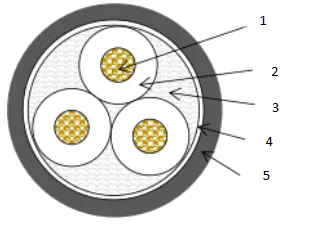നവം . 27, 2024 02:43 Back to list
Counterweighted Check Valve Design for Enhanced Performance and Reliability in Fluid Systems
Understanding Check Valves with Counterweights A Comprehensive Overview
Check valves play a crucial role in various fluid systems by allowing the flow of liquid in one direction while preventing backflow. Among the different types of check valves, the variant equipped with a counterweight is noteworthy for its unique design and functionality. This article delves into the principle of operation, benefits, applications, and maintenance of check valves with counterweights.
Principle of Operation
Check valves with counterweights operate on a straightforward principle they consist of a disk or a ball that moves in response to pressure differentials in the system. The counterweight is an added feature that enhances the valve's performance, especially in systems where fluctuations in flow rates might occur. The counterweight assists in closing the valve quickly when the flow direction reverses, preventing reverse flow and ensuring system integrity.
The design of these valves typically includes a hinge mechanism that allows the disk to swing open with the forward flow of the liquid. When the direction of flow changes or if there is a drop in pressure, the counterweight pulls the disk back down, sealing the valve and stopping any potential backflow. This responsive action is critical in maintaining the operational efficiency of various water, gas, and liquid transfer systems.
Benefits of Check Valves with Counterweights
One of the primary advantages of using check valves with counterweights is their ability to minimize water hammer—a pressure surge resulting from a rapid change in flow—by swiftly closing when reverse flow occurs. This preventive aspect reduces wear and tear on other components within the system, resulting in lower maintenance costs and longer operational life.
Additionally, these valves are less prone to leakage due to the effective sealing mechanism enabled by the counterweight. They are also highly reliable in a broad range of applications and can function effectively even in environments with variable flow conditions.
check valve with counterweight

Applications
Check valves with counterweights find extensive applications in various industries. In water treatment plants, they are essential for protecting pumps and other equipment from backflow that could contaminate clean water supplies. In chemical processing, these valves help maintain the desired flow direction of potentially hazardous materials, ensuring safety and compliance with regulatory standards.
Moreover, in HVAC systems, check valves with counterweights can prevent backflow in chilled or heated water lines, improving energy efficiency and system reliability. They are also employed in marine applications to maintain proper fluid dynamics in bilge systems, preventing flooding while ensuring effective drainage.
Maintenance Considerations
While check valves with counterweights are designed for durability, regular maintenance is essential to ensure optimal performance. Operators should routinely inspect the valves for signs of wear, debris accumulation, and proper counterweight function. Any malfunctioning or damaged components should be addressed immediately to prevent system failures.
Periodic cleaning and timely lubrication of mechanical parts also contribute to the longevity and reliability of these valves. Furthermore, it’s important to follow manufacturer guidelines for inspection intervals and maintenance practices to sustain performance and operational safety.
Conclusion
Check valves equipped with counterweights are an efficient solution for managing fluid movement in various applications. Their ability to prevent backflow while mitigating water hammer effects makes them an invaluable addition to any fluid system. By understanding their operation, benefits, and the necessity for regular maintenance, industries can harness the full potential of these essential components in maintaining system integrity and efficiency. Investing in quality check valves with counterweights ultimately leads to safer, more reliable, and cost-effective fluid management solutions.
Share
-
Reliable Wafer Type Butterfly Valves for Every IndustryNewsJul.25,2025
-
Reliable Flow Control Begins with the Right Ball Check ValveNewsJul.25,2025
-
Precision Flow Control Starts with Quality ValvesNewsJul.25,2025
-
Industrial Flow Control ReliabilityNewsJul.25,2025
-
Engineered for Efficiency Gate Valves That Power Industrial PerformanceNewsJul.25,2025
-
Empowering Infrastructure Through Quality ManufacturingNewsJul.25,2025